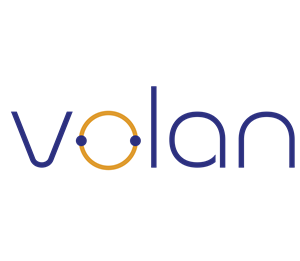If workforce productivity is the output, organizations must consider a myriad of inputs. Some considerations happen during initial interviews, where employers search for employees with the right skillsets, aptitudes, and mindsets. However, much of workforce productivity relies on day-to-day operations, leveraging human resources in the right ways—through the right metrics and insights, management and oversight, and tools and investments.
Workforce productivity prescribes the measurements that show how daily outputs fluctuate over time—and measures how and why these numbers fluctuate. Measuring employee performance ensures that employers can optimize workers’ time on the clock by acknowledging both efficiencies and places where their employee’s performance can be improved. In doing so, organizations can evolve to streamline operations and productivity at the workplace levels in the best way possible. This will remove any friction that impedes employee productivity in the workplace.
How to measure workforce productivity?
Workforce productivity is the outcome of the goods created and services rendered by employees each day, measurements are the tools to qualify and quantify the relevant metrics accurately. The desired outputs will generally trend with client demand or production goals. Workforce productivity metrics create the link between what employees produce and required levels of demand. That means employers must relate employee production with the documented processes, communications, and methods that move them toward desired goals.
So how do you measure productivity? Companies must leverage the right metrics to succeed. In all the complexities of day-to-day operations, we can boil down measurements for productivity in the workplace into six major categories: the physical work environment, individual behavior, managerial oversight, quality management, market conditions, client demands, and technologies. Here is a brief overview of what these metrics mean:
- The physical work environment includes each physical dimension of the workplace. Variables related to the workplace include everything in a floorplan, lighting, and utilities. Metrics on the physical environment should document anything related to the space employees interact with each day. Research shows that even the most nuanced environmental factors and workplace conditions—like fluorescent light vs. natural light, open windows, and air temperatures—impact a team’s productivity and how engaged employees are with their work. Thoughtful floorplan design and integration are factors warehouses and manufacturing facilities should consider if they want to increase employee productivity.
- Individual behavior entails all the variables related to how workers perform their everyday responsibilities. Researchers have found that individual skill sets are only part of the equation in employee efficiency. While a skill set that aligns with a company’s mission is often related to higher productivity, organizations have to measure productivity through other metrics related to individual behavior such as schedules, hours worked, individual movement throughout the day, and intrinsic motivation. Individual workers are different and perform tasks at their own pace, but having the analytics to see important productivity trends allows managers to make informed decisions about how to improve productivity in their facilities. For instance, productivity often fluctuates over a given day; if we diagnose where productivity peaks and where it plummets, we can understand the circumstances that boost productivity and the ones that don’t. Volan Technology provides movement, mapping, and productivity tracking tools that may explain the variances in day-to-day productivity.
- Managerial oversight establishes the correct protocols for organizational success. Managers often have the discretion to monitor employees by what they think is appropriate. Productivity analytics software also keeps track of the number of rounds at the workplace and the frequency of employee communications. Proper communication is also one of the best ways to increase team productivity. A facility could have premier technology and the best floor plan, but great communication is an essential element for increasing productivity. Teams that communicate effectively and through the proper channels tend to have employees who feel more engaged, feel more aware of what their peers are doing, and are more likely to say their personal career goals and values align with the company’s mission. Good communication directly affects not only productivity levels but also the company’s culture and employee satisfaction. A strong sense of satisfaction influences things like employee mental health and overall well-being which impact employee productivity. While performance reviews may happen quarterly, manager/employee interactions happen daily, and their frequency can be tracked alongside other productivity metrics.
- Quality management (QM) is usually a position that oversees all tasks, production, and activities that much be done to maintain a company’s desired quality of output. While it sounds similar, this is different from managerial oversight as it begins with the client or consumer expectations in mind. This is championed by the idea that the long-term success of a company comes from short-term customer satisfaction. While the goal of quality management is based on the product/service, this is done through improving the process by which the product or service is made. Achieving consistent, high-quality results comes through slowly perfecting the production process.
- Market conditions and client demands set the terms of workforce productivity. Production often changes with the demand for products and services. Therefore, workforce productivity outputs must be consistently updated by demand inputs. Market conditions not only determine the economic climate but the conditions of available talent.
- Technologies are the tools that workers use to perform their everyday responsibilities and managers utilize to monitor employee productivity. Organizations must understand where productivity goals and consumer expectations meet the need for technological interventions—either with better technologies in the workplace or software packages to increase efficiencies through oversight.
How to optimize workforce productivity levels
Optimizing employee productivity means knowing what to do with the right metrics. This entails utilizing the right software technologies to lessen the burden on managers and analyze key metrics to inform operational decisions. There is no way for managers to manually track everything their employees do, and this is where the right technologies are critical to improving employee productivity. Incorporating the right software technologies doesn’t mean managers don’t interact with their employees—it only means they can be more strategic in their interpersonal interactions, leveraging automation for a more clear picture of daily productivity.
Successful companies know their business operations inside and out. However, in a time of rapid change and unprecedented shocks due to the COVID-19 pandemic, it’s hard to know what to expect.
Productivity targets now may not correspond with future demand: when boom or bust markets come, we must have the tools to know what to do. Essentially, workforce productivity metrics must provide the context of market fluctuations and demand’s flexibility over time.
Importantly, innovation occurs at a fast clip. What was thought to be efficient in the past may not be effective tomorrow. Think about the manufacturing line before Henry Ford’s paradigm-shifting ideas. Individual workers were tasked with assembling an entire car to just assembling one part. This one new idea cut the time to make one car from over twelve hours to less than two! This is a great reminder that dedication to changes that increase employee productivity requires some flexibility to recognize and allow improvements in day-to-day operations.
Tools for optimizing productivity in the workplace
Strategies to optimize employee productivity inherently involve tracking key metrics in order to implement new ways to streamline operations. To accomplish a holistic approach to workforce productivity that doesn’t involve unreasonable expectations or forgo workers’ health and wellness, organizations must leverage technology to reach their goals. Ways to increase employee productivity are often intertwined with company culture, proper management, and good communication.
Furthermore, productivity in the workplace involves investing in the right technologies to ensure peak efficiencies. Volan Technology offers software packages that are tailored to specific company needs and can be leveraged to reach production targets and quality levels that consumers expect. Ultimately, workforce productivity tools include metrics and technology alongside the right implementation strategies. Here are a few strategies for leveraging tools that optimize productivity in the workplace:
- Leverage a customer-first approach. There are many ways to check up on how products perform in the market. Organizations should use all tools at their disposal, including net promoters scores (NPS), customer satisfaction surveys, and client feedback mechanisms. These measurement tools correlate with many organizational success indicators, including individual employee productivity.
- Measure employee productivity through digital interventions. Technologies are improving every day. We can automatically collect swipe-in and clock-out times, but we can also analyze employee movement throughout the day and evaluate how this movement relates to productivity. The goal of this data is not for companies to become harsh task-masters, but instead to learn how to increase employee efficiency and minimize idle time.
- Create better employee engagement through ongoing reviews, feedback, and incentives. Technological interventions can also improve employee productivity through on-the-spot communication with other employees, management, or feedback. Productive employees should also be rewarded in various ways. Management can use incentives as a way of encouraging employees to take steps towards bigger career goals and development.
- Intervene with training when it is appropriate to do so. Career development requires motivation on behalf of the employee to succeed and continuous training to upskill and work more efficiently. Workforce productivity metrics can demonstrate opportunities to intervene and provide training where necessary.
- Pair client management with workforce productivity. Client management software is a widely used tool, but many companies don’t leverage the opportunity to pair this information with workforce productivity metrics. Together these technologies make increasing employee productivity and improving customer service a much easier task.
Conclusion
In companies across all industries, budgets are tight, and competition is fierce; organizations can’t lose an inch in the marketplace. Workforce productivity prescribes a set of strategies and tools to reach peak efficiency throughout an organization. This includes basic metrics related to individual, daily goals, alongside what should be documented in the workplace environment, organizational culture, and managerial practices that can help organizational productivity in the workplace. Importantly, there is no one-size-fits-all solution for every company. Whether you have a large or small business, leadership must understand the ins and outs of their organization. Workforce productivity relates directly to overall business growth, individual careers, employee turnover, and customer satisfaction.



